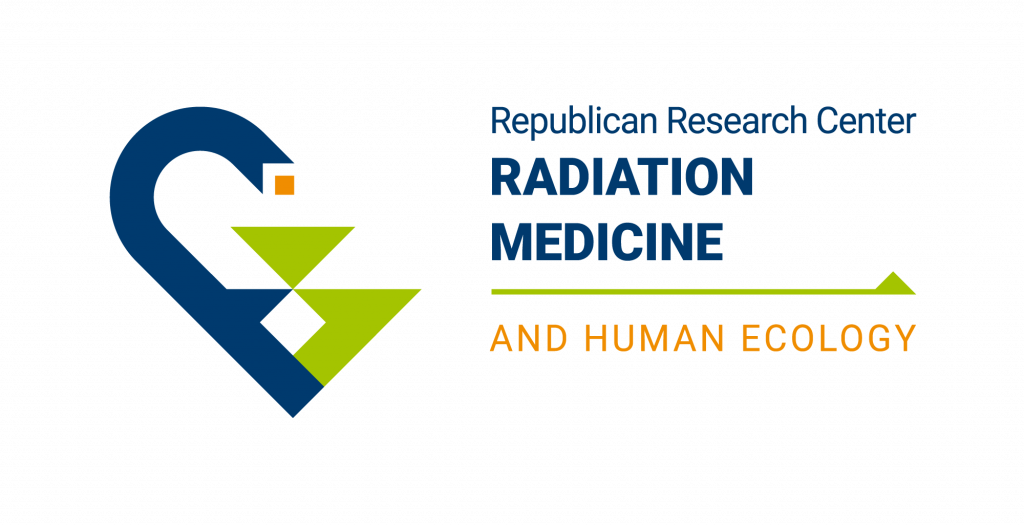Сardiology
Ischemic heart disease & Stable angina
Lipid metabolism disorders and atherosclerosis
Arterial hypertension
Heart rhythm disorders
Сhronic heart failure
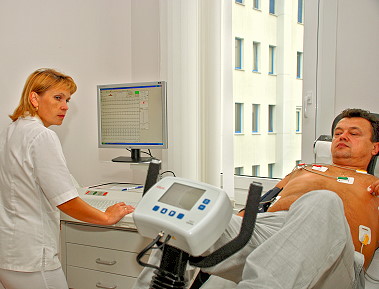
- stress tests - Shiller bicycle ergometry with the possibility of changing the angle of the ergometer under constant ECG control and monitoring of blood pressure
- 24-hour ECG monitoring to detect episodes of myocardial ischemia, both accompanied by pain and painless
- echocardiography using the Vivid 9 expert-class ultrasonic device, which allows to assess the structural and functional features of the heart with a high degree of resolution, conduct a Doppler study of intracardiac blood flow, and using the latest technique of tissue Doppler mapping - myocardial kinetics
- stress-echocardiography - study of the functional reserve of the heart muscle during physical activity using ultrasound
- clinical diagnostics includes diagnostics of the lipid spectrum, cardiospecific markers of acute myocardial injury, levels of natriuretic peptides, coagulogram, aggregation and other biochemical parameters
Based on the results of diagnostic examinations, our team will determine the characteristics of the course of the disease and prescribe individual treatment regimens using modern groups of drugs.
For this purpose, the department uses angiotensin-converting enzyme inhibitors, angiotensin receptor blockers, beta-blockers, calcium antagonists, diuretics, nitrates, metabolic drugs, etc.
In the absence of contraindications, a course of hyperbaric oxygenation is possible.
Hyperbaric oxygen therapy is a method of treatment with oxygen in a pressure chamber.
With increased pressure, the inhaled oxygen dissolves better in the blood plasma, which improves the supply of oxygen to body tissues.
Patients with lipid metabolism disorders and atherosclerosis require an in-depth study of the state of lipid metabolism and determination of changes in the walls of blood vessels, especially in the early and preclinical stages of atherosclerotic changes.
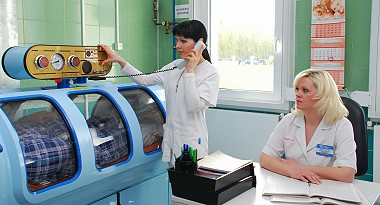
- biochemical blood test with the determination of a detailed lipid profile on ARCHITECT analyzers from Abbot
- ultrasound examination of blood vessels (carotid, brachial arteries and arteries of the lower extremities) on the Vivid 9 expert-class scanner with the ability to determine endothelium-dependent vasodilation
- magnetic resonance imaging of cerebral vessels to detect their atherosclerotic lesions
Patients with elevated cholesterol levels and disorders in the blood lipid spectrum, atherosclerotic changes in blood vessels will be recommended a diet that helps to reduce the level of atherogenic lipids, and optimization of lipid-lowering drug therapy will be carried out.
It is also possible to carry out extracorporeal blood purification procedures - therapeutic plasmapheresis, carried out jointly with the staff of the hemocorrection department under the supervision of experienced personnel.
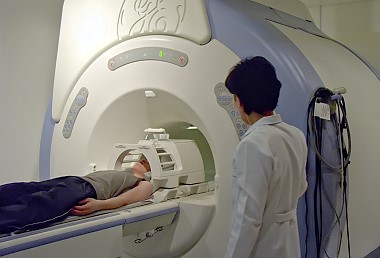
- 24-hour blood pressure (BP) monitoring, which provides the doctor with invaluable information about daytime, nighttime and daily BP parameters, BP variability, and the effectiveness of the prescribed treatment.
- echocardiography on high resolution ultrasound scanner Vivid 9, which allows to determine the presence and degree of myocardial hypertrophy of the left ventricle of the heart, violation of its diastolic function and the size of the heart chambers.
- ultrasound examination of the kidneys, adrenal glands, renal arteries to detect secondary hypertension (associated with diseases of the adrenal glands, kidneys), as well as to clarify the changes that have occurred in the kidneys as a result of increased blood pressure.
- ultrasound examination of carotid arteries, arteries of other vascular pools.
- ultrasound examination of the thyroid gland in order to clarify the identified changes, computed tomography of the kidneys and adrenal glands can be conducted if necessary.
- clinical diagnostics includes diagnostics of the level of thyroid hormones, adrenal glands, a wide range of biochemical parameters, including a detailed lipid profile, the content of angiotensin, catecholamines, electrolytes, aldosterone, corticosteroids, as well as the level of protein in the urine and urinary sediment.
New approaches to the treatment of persistent arterial hypertension accompanied with the pathology of other organs and systems (diabetes mellitus, bronchi -obstructive diseases, acid-associated diseases of the gastroduodenal tract), the use of new groups of antihypertensive drugs and their combinations are the priorities of the department.
- 24-hour ECG monitoring, which allows not only to determine the type and quantitative characteristics of arrhythmia, but also to evaluate the effectiveness of the prescribed treatment.
- echocardiography on the Vivid 9 expert class apparatus, the study of which allows assessing the state of the valvular apparatus, the size and function of the heart chambers, determining the presence of left ventricular myocardial hypertrophy, etc.
- ultrasound of the thyroid gland, liver, kidneys, as well as blood tests to assess the function of these organs.
- radiography and, if necessary, CT of the chest, spirography to exclude diseases of the lungs and pulmonary vessels
- biochemical blood test with the determination of indicators of the lipid spectrum of blood and electrolytes.
- ECG control
An individual approach to the selection of antiarrhythmic therapy, the search for effective treatment regimens is carried out using constant ECG monitoring, including daily monitoring. To increase the effectiveness of antiarrhythmic treatment, patients undergo courses of relaxation psychotherapy and rehabilitation.
The doctors of the department diagnose, treat and monitor patients with systolic and diastolic chronic heart failure, which is a severe complication of cardiovascular diseases.
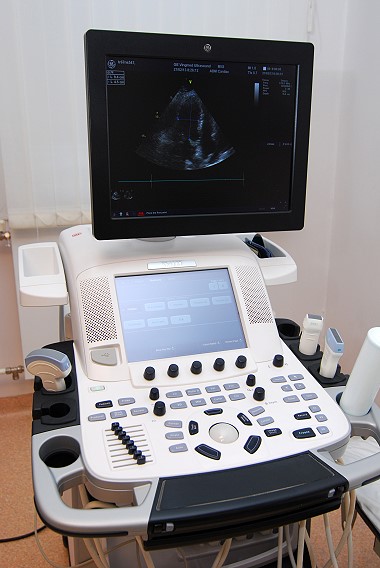
- chest x-ray to detect heart enlargement and pulmonary venous congestion, supplemented by computed tomography if necessary
- 2-lead ECG and 24-hour ECG monitoring to detect ischemia, arrhythmias, and conduction disturbances.
- echocardiography, with color Doppler mapping and tissue Doppler study, during which the presence and type of heart dysfunction are clarified, the condition of the valvular apparatus, heart chambers and hemodynamics is analyzed.
- ultrasound examination of the abdominal organs and kidneys to determine their involvement in the pathological process, the presence of free fluid in the abdominal cavity.
- a 6-minute walk test, which can be used to determine the functional reserve of the heart muscle, the severity of heart failure, as well as assessment of the effectiveness of ongoing therapeutic measures
- in-depth examination of blood parameters, both general clinical and biochemical, with the determination of the function of the liver and kidneys, the levels of natriuretic peptides in dynamics
Treatment of patients with chronic heart failure aims to eliminate the symptoms of the disease, slow its progression and improve the quality of life and prognosis.
These goals are achieved by the diet, physical activity regimen, combined drug and non-drug therapy with the use of modern topical drugs (drugs of the ARNI group, angiotensin-converting enzyme inhibitors, angiotensin receptor blockers, beta-blockers, aldosterone antagonists, diuretics, antithrombotic agents, etc.)
Our specialists:
Alexey Korotaev, PhD in Medicine, Associate Professor, highest qualification category
Victoria Salivonchik, highest qualification category
